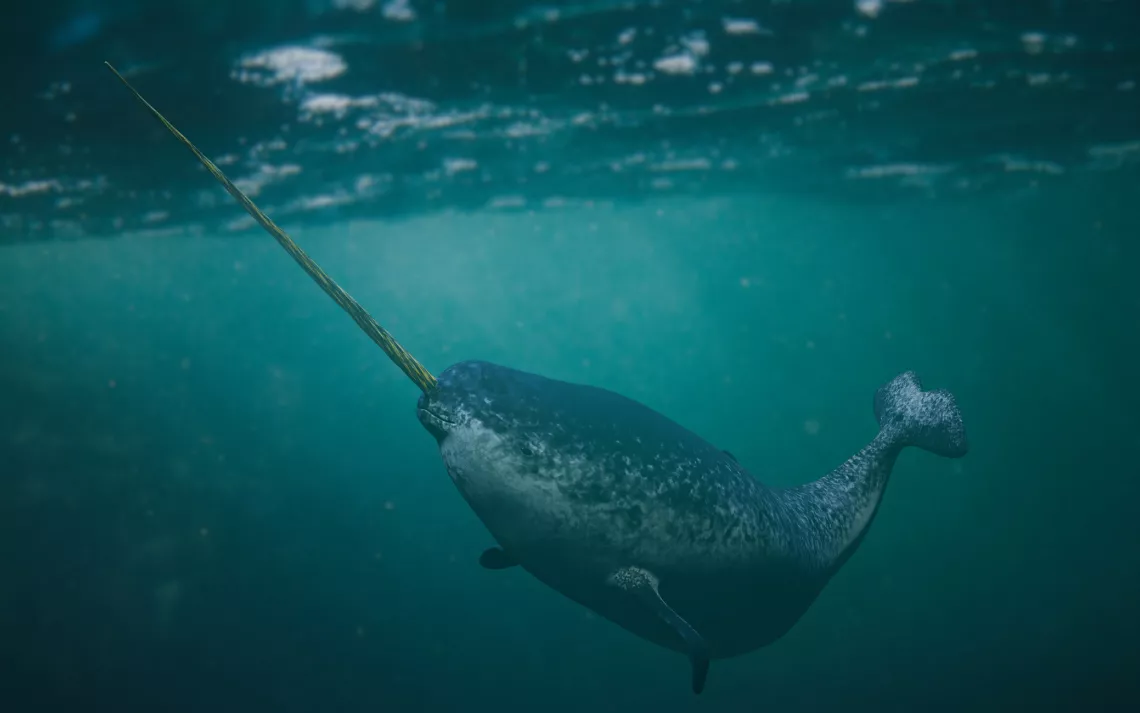Narwhals are Spiraling Down
The unicorns of the sea are threatened by rising water temperatures

In the Middle Ages, entrepreneurial Vikings got rich selling the massive spiral tusks of the narwhal as unicorn horns to credulous European royals. Today, the small whales get to keep their tusks (actually wildly elongated incisors) but are put to work gathering data on water temperatures far below the winter pack ice of Baffin Bay, between Canada and Greenland. Starting in 2005, University of Washington research scientist Kristin Laidre and colleagues began capturing narwhals with large nets in polar waters and outfitting them with depth and temperature recorders. Each time the narwhals surface to breathe, the data is beamed to orbiting satellites.
This has made narwhals bearers of their own bad news. Their data show maximum temperatures under the winter pack ice to be 1.5 degrees Fahrenheit warmer than climatologists' estimates, pointing to a rapidly warming Arctic. Narwhals feed intensively on fish that live beneath the sea ice and are vulnerable to its loss. "Climate change is definitely a threat to the narwhal, as is development of the Arctic in general," Laidre says, citing in particular seismic exploration and increased traffic in ice-free shipping lanes. An ice-free Arctic would make narwhals as rare as the unicorns they resemble.
 The Magazine of The Sierra Club
The Magazine of The Sierra Club



